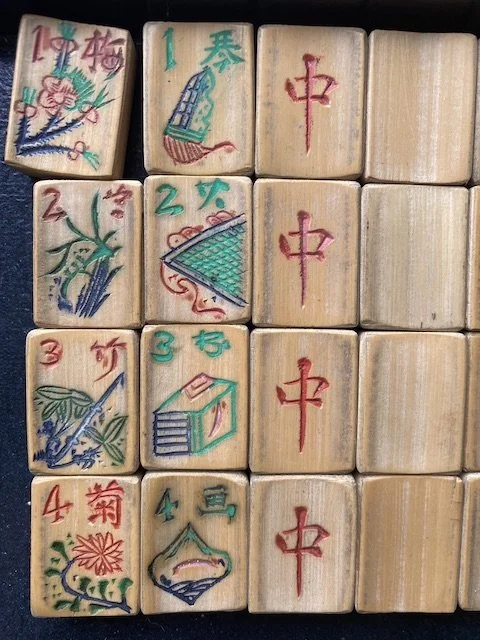Picture Tiles
It was with the picture tiles that a bone carver could show his skill. As sets were also carved by young men, they can also showcase the naivete of their carving. Sets made for export could have as many as 15 picture tiles, with many Mahjong tile producers believing that these tiles made the game more appealing and the sets more sellable.
Historians argue that the inclusion of picture tiles with flowers and seasons sprang from another gambling game from the North of China. A 1914 Manual of ‘Sparrow” Tiles lists four flowers (plum, orchid, bamboo and chrysanthemum), four scholar arts (lute playing, chess, calligraphy and painting), four noble occupations (fisherman, woodcutter, farmer and scholar) and a four character idiom (wind, flower, snow and moon) as picture tiles. Another text from 1890 suggests 20 different forms of ‘flower’ tiles and the American collector Culin, in 1924 wrote that the workshops would make any pictorial design you wanted. By the 1930’s they were largely standardised as four flowers and four seasons.
The other picture tile is the ace of the tiao (or bamboo or strings of cash) suit which is almost always shown as a bird. Early sets feature a highly simplified form, whilst others have sparrows, doves, peacocks, birds in flight, phoenix and more.

